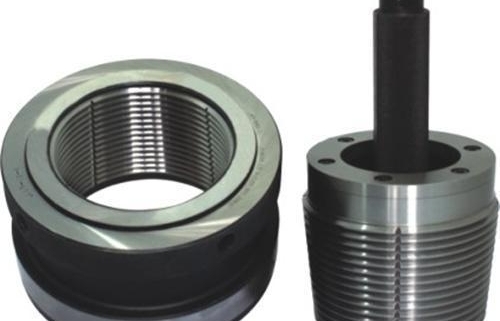API Spec 5B vs ASME B1.20.1
Zavedení
Pokud jde o normy závitování a připojení v ropném, plynárenském a průmyslovém sektoru, API Spec 5B vs ASME B1.20.1 jsou dvě kritické reference. Tyto normy upravují specifikace pro závity na trubkách, hadicích a fitinkách a zajišťují integritu, kompatibilitu a výkon závitových spojů. Ačkoli oba slouží ke stejnému obecnému účelu standardizace vláken, vyhovují různým aplikacím a průmyslovým odvětvím s odlišnými technickými požadavky a rozsahem.
Co jsou API Spec 5B a ASME B1.20.1?
API Spec 5B je norma publikovaná American Petroleum Institute (API), která specifikuje závitování, měření a zkušební postupy pro závitové spoje na plášti, hadici a potrubí používané v ropném a plynárenském průmyslu. Tato norma je zásadní pro zajištění mechanické integrity potrubních spojů ve vysokotlakém a vysoce namáhaném prostředí.
ASME B1.20.1, na druhé straně je norma Americké společnosti strojních inženýrů (ASME), která poskytuje specifikace pro trubkové závity pro všeobecné použití, běžně označované jako závity National Pipe Taper (NPT). Tato norma je široce používána v různých průmyslových odvětvích, včetně instalatérství, HVAC a obecných potrubních systémů, kde převládají nižší tlaky a méně náročné podmínky.
Klíčové rozdíly: API Spec 5B vs ASME B1.20.1
1. Rozsah aplikace
API Spec 5B:
Používá se především v ropném a plynárenském průmyslu.
Kryje závity pro plášť, potrubí a potrubí.
Zajišťuje vysoce výkonné spoje, které odolávají extrémnímu tlaku, teplotě a okolním podmínkám.
ASME B1.20.1:
Používají se v různých průmyslových odvětvích, včetně stavebnictví, instalatérství a obecných průmyslových aplikací.
Řídí závity NPT, široce používané pro nízko až střednětlaké systémy.
Zaměřuje se na univerzální aplikace, kde závitování nemusí odolávat extrémním podmínkám typickým v odvětví ropy a zemního plynu.
2. Typy závitů a provedení
API Spec 5B:
Určuje závity pro plášť, hadičky a potrubí, včetně závitů API Buttress (BC), Long Thread (LC) a Extreme Line (XL).
Tyto závity jsou navrženy tak, aby poskytovaly těsné, nepropustné těsnění v prostředí s vysokými tlaky a mechanickým zatížením.
Závity jsou typicky robustnější, s vyšším záběrem závitu a specifickými požadavky na utahovací moment a mazání závitu.
ASME B1.20.1:
Definuje rozměry a tolerance pro závity NPT, kuželové závity, které těsní kontaktem kov na kov.
Závity NPT jsou méně robustní než závity, ale jsou vhodné pro aplikace s nižším tlakem, kde jsou důležitějšími faktory snadná montáž a cena.
NPT závity jsou přímočařejší, zdůrazňují snadnost výroby a použití v univerzálních aplikacích.
3. Požadavky na výrobu a testování
API Spec 5B:
Zahrnuje přísné požadavky na testování pro měření závitu, včetně specifických závitových kalibrů API pro zajištění souladu s normou.
Nařizuje testovací postupy, jako je testování těsnosti, tlakové testování a někdy destruktivní testování, aby se ověřila integrita závitového spojení v provozních podmínkách.
Zdůrazňuje potřebu přesného řezání závitů, správného mazání závitů a vhodných utahovacích momentů, aby se zabránilo zadření závitu a zajistilo se bezpečné spojení bez úniků.
ASME B1.20.1:
Poskytuje pokyny pro výrobu a měření závitů NPT, ale s méně přísnými testovacími požadavky než API Spec 5B.
Závity NPT se obvykle kontrolují pomocí standardních závitoměrů, a přestože je nutné testování těsnosti, zkušební protokoly jsou obecně méně přísné.
Zaměřuje se na zajištění správného tvaru vláken a jejich správného zapojení, ale ve srovnání s API Spec 5 B standard předpokládá shovívavější aplikační prostředí.
4. Tlak a ekologické aspekty
API Spec 5B:
Je určen pro vysokotlaká prostředí, jako jsou hlubinné vrty, kde potrubní spoje musí odolávat nejen tlaku, ale i tepelnému cyklování, mechanickému namáhání a vystavení koroznímu prostředí.
Vlákna API musí poskytovat spolehlivý výkon po dlouhou dobu, často v drsných a vzdálených podmínkách.
ASME B1.20.1:
Používají se v nízkotlakých aplikacích s výrazně méně závažným environmentálním a mechanickým namáháním.
Vhodné pro systémy jako rozvody vody, HVAC a obecné průmyslové potrubí, kde jsou tlaky a teploty v mírném rozsahu a kde závitování nemusí odolávat extrémním vlivům prostředí.
Časté mylné představy
1. Zaměnitelnost:
Jednou z běžných mylných představ je, že vlákna API a vlákna NPT jsou zaměnitelná. nejsou. Každý typ závitu je navržen pro specifické aplikace a použití nesprávného standardu by mohlo mít za následek selhání připojení, netěsnosti nebo dokonce katastrofální selhání systému.
Závity API a závity NPT mají různá konstrukční kritéria, profily závitů a požadavky na materiál, což je činí nevhodnými pro náhradu bez náležitého technického posouzení.
2. Složitost:
Někdo může předpokládat, že závity ASME B1.20.1 jsou přímočařejší díky jejich použití v méně náročných aplikacích, ale složitost může nastat v různých velikostech a dostupných tvarovkách. Naopak, zatímco vlákna API jsou složitější z hlediska návrhu a testování, jejich použití v ropném a plynárenském průmyslu je přímočaré.
Praktický návod pro výběr správného standardu
Vyberte specifikaci API 5B když:
Pracuji na projektech v ropném a plynárenském průmyslu, zejména při vrtání, dokončování vrtů nebo stavbě potrubí.
Vaše aplikace zahrnuje prostředí s vysokým tlakem a vysokou teplotou, kde je integrita závitů kritická, aby se zabránilo únikům a poruchám.
Musíte splnit přísné regulační a bezpečnostní požadavky na průzkum a těžbu ropy a zemního plynu.
Vyberte ASME B1.20.1 když:
Navrhujeme nebo instalujeme potrubní systémy pro obecné průmyslové, instalatérské nebo HVAC aplikace, kde jsou tlaky a teploty v mírném rozsahu.
Důležitými faktory jsou snadná montáž, hospodárnost a široká dostupnost závitových součástí.
Pracujete na projektech, kde jsou standardní specifikací závity NPT a aplikační prostředí není tak náročné jako v sektoru ropy a zemního plynu.
Závěr
Pochopení rozdílů mezi API Spec 5B a ASME B1.20.1 je zásadní pro zajištění použití správného standardu závitování pro vaši konkrétní aplikaci. Zatímco API Spec 5B je navržen pro přísné požadavky ropného a plynárenského průmyslu, ASME B1.20.1 poskytuje široce použitelný standard pro univerzální potrubní závity. Výběrem vhodné normy můžete zajistit bezpečnost, spolehlivost a účinnost vašich závitových spojů, což v konečném důsledku přispěje k úspěchu a dlouhé životnosti vašich potrubních systémů.




